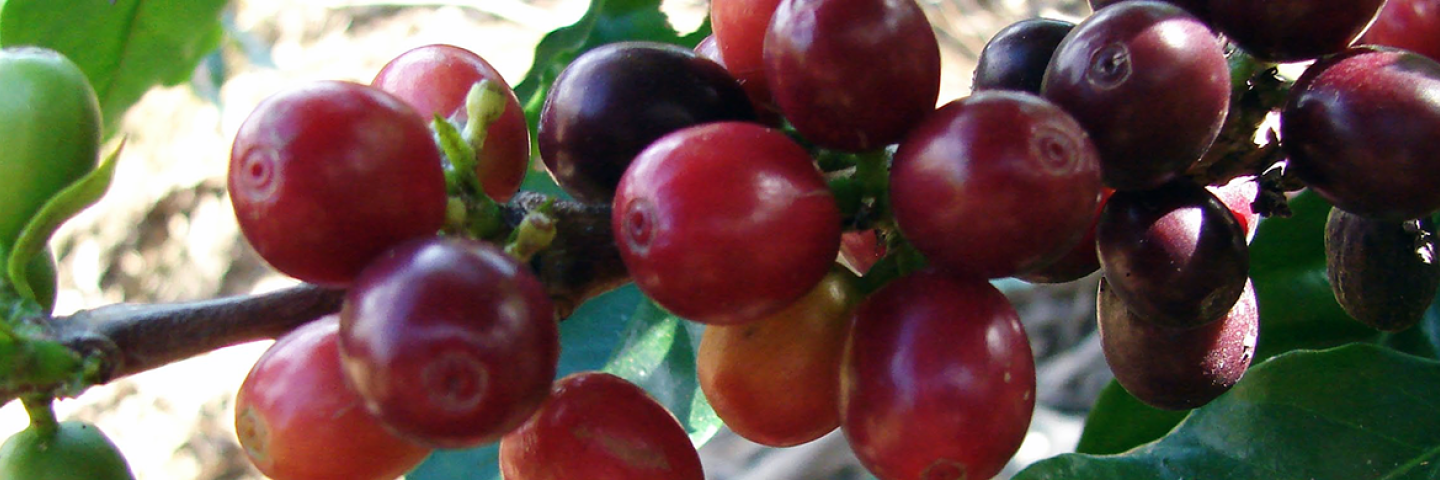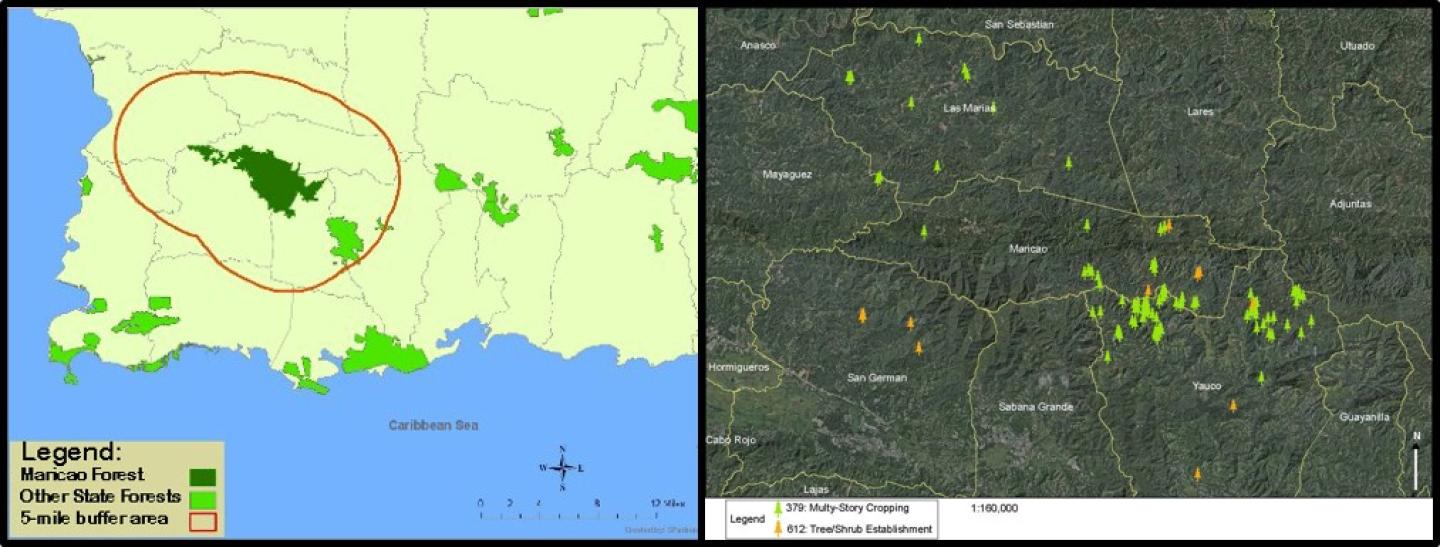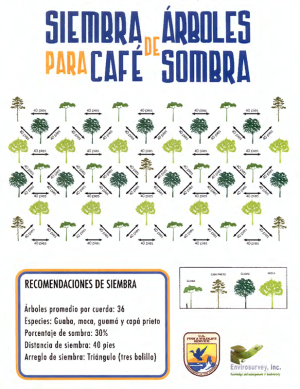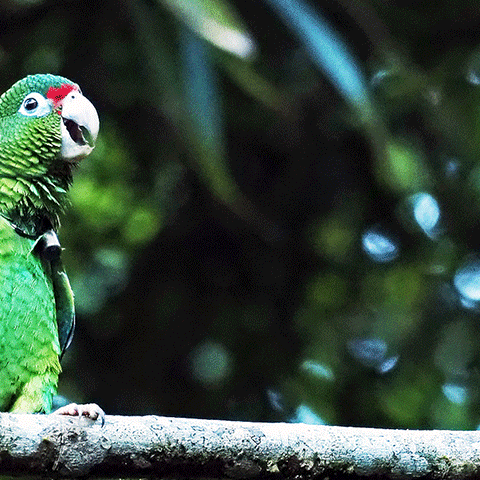
NRCS Caribbean is helping Puerto Rico’s farmers to convert their sun-grown coffee plantations to shade-grown coffee to protect, enhance and conserve soil, water and wildlife habitat. Promoting shade-grown coffee is a partnership between NRCS, the U.S. Fish and Wildlife Service (USFWS) and local NGOs
About 15 years ago, the NRCS State Technical Committee’s Wildlife and Forestry Subcommittee advised NRCS to designate a shade-grown coffee priority area extending 5 miles around the perimeter of the Mariaco State Forest to protect wildlife. This area includes the municipalities of Maricao, Mayagüez, Las Marías, San Sebastián, San Germán and Yauco. NRCS began the Shade Coffee Initiative to fund coffee conservation practices in the area through the Environmental Quality Incentives Program.


Shade-grown coffee plantations provide important wildlife habitat functions such as refuge, shelter and nesting sites. They also create a biological corridor between the Maricao, Susúa and Guilarte State Forests (above right). These forests provide habitat for many threatened and endangered species including:
- Amazona vittata (Puerto Rican Parrot, Cotorra puertorriqueña)
- Accipiter striatus, Puerto Rican Sharp-shinned Hawk
- Caprimulgus noctitherus, Puertan Rico Nightjar
- Dendroica angelae, Elfin woods warbler
- Epicrates inornatus, Puerto Rican boa
NRCS and partners used two Agroforestry Shade Coffee Models (below) to promote shading of up to 30% of the acreage on coffee plantations.

Five native tree species traditionally used by coffee producers in Puerto Rico were distributed to farmers for planting:
- Guaba (River koko, Inga vera)
- Moca (Dog almond, Andira inermis)
- Guamá (Inga laurina)
- Capá prieto (Spanish elm, Cordia alliodora)
- Cojoba cojoba (Cojoba arborea)
Since 2007, project partners have distributed over 83,000 shade trees, and NRCS has contributed $408,350 to improve 979 acres of coffee plantations to provide the following benefits:
- Reduced pesticide and fertilizer use on coffee crops;
- Reduced soil erosion;
- Lower temperatures;
- Improved pollinator habitat;
- Improved coffee and bean quality;
- Extended tree production lifetimes; and
- Improved wildlife habitat.
Shade Coffee Conservation Practices
- Contour Orchards (331)
- Multistory Cropping (379)
- Mulching (484)
- Nutrient Management (590)
- Integrated Pest Management (595)
- Tree/shrub site preparation (490)
- Tree/shrub establishment (612)
- Tree/shrub pruning (660)
More Information
- NRCS Delivers Shade Trees to Utuado Coffee Producers - June 2019
- NRCS Helps Deliver Native Trees for Shade Coffee to Local Farmers / El NRCS ayuda a entregar árboles nativos para el café de sombra a los agricultores locales - September 2018
- Too Hot for Coffee! Warming Temperatures in Puerto Rico Present a Challenge to Coffee Growers - USDA Blog - May 4, 2017
- Ecological Benefits of Shade-Grown Coffee - Smithsonian's National Zoo & Conservation Biology Institute


